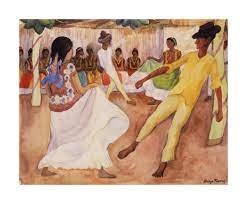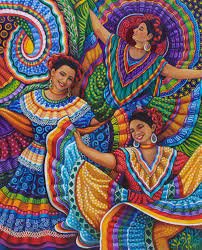Arturo Márquez
Born: 20 December 1950, Álamos, Mexico
Fast Facts
Son and grandson of musicians
Wide variety of musical influences including mariachi, The Beatles, The Doors, and Chopin
Utilizes Mexican styles and forms in his music, especially dances
Recognized as one of the most important Mexican composers
Lives and works in Mexico City
Arturo Márquez (b 1950)
Mexican Maestro
Arturo Márquez was born in 1950 in Sonora, Mexico into a musical family. The family moved to Los Angeles when Márquez was twelve where he began violin lessons and learned other instruments in junior high school. Márquez composed his first works at age sixteen and returned to Sonora the next year where he worked as a band director. He entered the Mexican Music Conservatory in Mexico City in 1970 where he studied piano and music theory. A scholarship from the French government allowed Márquez to study composition in Paris. He received a Fulbright Scholarship and used it to earn a graduate degree in composition from the California Arts Institute.
At first, Márquez’s compositions were mainly performed in Mexico. His pieces often include rhythms and movements inspired by Latin ballroom dance. This is especially prominent in his most well-known compositions, the Danzónes. These works, performed by the Simon Bolívar Youth Orchestra, under the direction of Gustavo Dudamel, brought Márquez to greater prominence in the rest of the world. Since then, many of Márquez’s other works have been performed by major orchestras worldwide and the Danzónes have been choreographed by numerous ballet companies. Márquez lives with his family in Mexico City where he works at the National University of Mexico, Superior School of Music, and the National Center of Research, Documentation, and Information of Mexican Music.
Mexican dance, Cuban roots
A danzón is a traditional ballroom dance popular in Mexico that developed into its current form in cafes and dancehalls and is related to the Cuban habanera, a music or dance from Havana. The dance is passionate and dramatic, sharing rhythms and styles with the tango, but featuring unique, intricate footwork. In this composition, Márquez explores the various moods of a traditional danzón showing the wide range of emotion that can be expressed within the dance. Márquez wrote, “It endeavors to get as close as possible to the dance, to its nostalgic melodies, to its wild rhythms, and although it violates its intimacy, its form, and its harmonic language. It is a very personal way of paying my respects and expressing my emotions toward a truly popular dance music.” Danzón No. 2 has become Márquez’s most famous piece and is so popular in Mexico that it is sometimes considered the country’s second national anthem.
Márquez was born in Álamos, Mexico. He is still alive!
A photo of the city of Álamos.
Danzon No. 2
What to listen for:
Dance-like rhythms throughout
Changing moods, tempos, and orchestration with numerous solos
A spectacular, colorful, and rhythmic conclusion
Composers often write lots of music, but only some of it becomes famous. Below are some important works by Márquez that are still performed today.
Danzónes
Conga del Fuego
Danza imposible
Fandango, violin concerto
San Miguel Allende by Hale Woodruff, image source: https://www.michaelrosenfeldart.com/artists/hale-woodruff-1900-1980
Me and My Parrot by Freida Kahlo, image source: https://www.fridakahlo.org/me-and-my-parrots.jsp
Flower Vendor by Diego Rivera, image source: https://www.diegorivera.org/flowervendor.jsp
Danza en Tehuantepec by Diego Rivera, image source: https://www.artnews.com/art-news/retrospective/from-the-archives-anita-brenner-on-the-mexican-art-scene-in-1951-9224/
Mexican Dancers by Daniella Willet-Rabin, image source: https://daniellawillettrabinfineartprints.bigcartel.com/product/mexican-folk-dancers
Fun Facts
Márquez is the oldest of nine children.
Márquez’s father was a mariachi musician, and his grandfather was a folk musician.
Márquez has been awarded the National Prize for Arts and Sciences.
Márquez was the first musician to receive “La Medalla De Oro De Bellas Artes de Mexico” (Gold Medal of Fine Arts of Mexico).
If you liked Danzón No. 2, try:
Conga de Fuego with Gustavo Dudamel and Orquesta Simón Bolivar
“Fandango” final movement with Anne Akiko Meyers, Violin and the LA Philharmonic conducted by Gustavo Dudamel
Alas (a Malala) in honor of Malala Yousafzai







